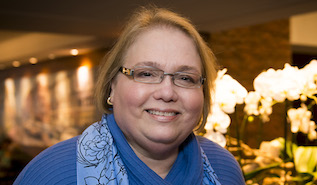So Many Differences, So Much in Common

Planning for the 2015 National Forum on Family Philanthropy (Seattle, October 14-16) involves a wild ride through all the many interests and choices donor families bring to their giving. Based on evaluations from the 2014 National Forum and all the many topics submitted for consideration for 2015, the range of topics you want to discuss span governance, grantmaking, management, and family dynamics.
After culling through the topics in preparation for last week’s meeting of the National Forum Advisory Committee, we know that high on your priority list are impact investing, non-family/community trustees (when, why and how), effective issue collaborations, perpetuity or not (and how does a foundation lifespan choice support your goals for giving and family participation), assessment and evaluation tools, and how do boards and board chairs function at the highest level. We know you want to hear about the grantmaking strategies of creative and risk tolerant donor families. You also want to hear about how family participation – particularly leadership choices and next generation involvement – supports great giving in meaningful ways.
Given all the varied grant interests, governing structures, giving vehicles, and staffing systems, you’d think the Committee and staff would be overwhelmed with options and focus. However, the effect could not be more different. We are inspired, invigorated, and happily challenged to ensure the National Forum program delves into as many critical issues as possible, and all with a provocative, sophisticated, and satisfying approach. We want to find data-driven sessions at the same time we tell special stories. Both have a place at the National Forum. We even invite your last-minute ideas for themes you would like to see explored. But don’t wait long as the final program is in development.
Family giving programs can be as different as families themselves. Each founder has particular goals for charitable mission, for family participation in ongoing guidance and governance, and for the financial strategy pursued (investments, payout, spend down, etc.). But there is something fundamentally true of every giving family.
That commonality became deeply apparent to me when I spoke a few weeks ago at the Jewish Funders Network conference in Tel Aviv, Israel. The topic was the same one most frequently requested here at home: multi-generational participation and effectively involving the next generation.
My session kicked off with an overview of multi-generational giving and how families are finding successful succession and where some families are stumbling. Then we got down to the great stuff: an interview and conversation with three pairs of family members from three different continents. There was an example of a family with a charitable commitment going back to the mid-19th Century. Another represented a blended family model. Finally, a founder who, along with her late husband, made the decision to begin the foundation with their three adult daughters as equals, presented along with one of her daughters. There were family businesses in the background and a number of different giving vehicles in play.
All of the passion and commitment I’ve come to expect from charitable families was in evidence. What was also in evidence was an underlying but palpable theme: a deep desire to work with family members to accomplish something very special for the causes and regions served. I was moved by the responsibility they felt to do the work well. There was an excitement about involving great resources – people and information. There was a sense of the possible. Their hopes and commitment transcended any strategic differences they had.
Some years ago, I remember being a bit frustrated by an interview study I was doing on why founders began a family philanthropy and what they hoped to accomplish. I thought the answers too vague; most said they started the philanthropy to give back and they hoped to make a difference. As always, it was when I opened myself to truly listening and learning, that I appreciated two things. Founders often begin this work with a sense of gratitude and optimism. What could be more fundamental and mobilizing than that?
That lesson is brought home to me every time I do anything in support of donor families – whether it is the intricate puzzle making necessary to planning a National Forum agenda or facilitating a remarkable conversation halfway around the world.
Ginny
